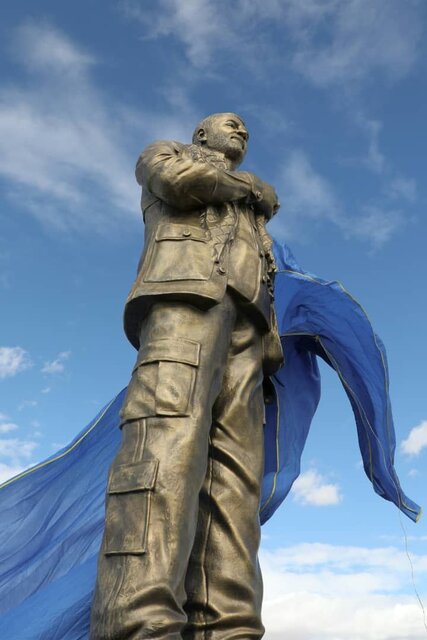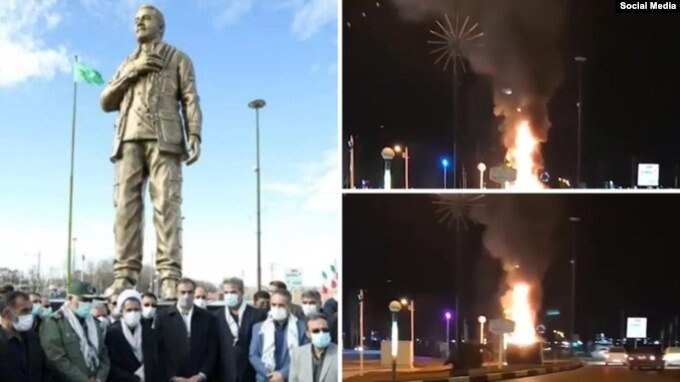On the morning of 5 January 2022, authorities in Shahrekord, in Iran’s Charmahal and Bakhtiari Province, unveiled a towering statue of Qassem Soleimani, the notorious commander of the terrorist Quds Force, eliminated in a 2020 drone strike.
This statue, built over the course of a year and funded at great expense from the Iranian people’s pockets, was part of a propaganda effort to glorify Soleimani. Officials from the regime gathered with great fanfare to unveil the monument, scheduling further ceremonies at the square where it stood.
But by 9:30 pm that evening, the Resistance Units had torched the statue in a bold act of defiance. This daring operation, carried out at immense personal risk, sent the regime into a frenzy. The semi-official ISNA news agency reported on 6 January: “In a brazen act, the statue of Lt. Gen. Haj Qassem Soleimani, unveiled yesterday morning, was set ablaze last night by unidentified individuals.”
The regime’s Majlis (Parliament) representative in Shahrekord, Mohammad Ali Nekonam, condemned the act, labelling it a “crime” that, he claimed, would bolster Soleimani’s popularity. Yet the public’s response to Soleimani’s image has repeatedly demonstrated otherwise. Across Iran and even in neighbouring countries, his posters and statues have been torn down or set aflame, reflecting widespread disdain for the man and what he represented.

Soleimani’s legacy is one of terror and suppression, both domestically and abroad. As head of the Revolutionary Guards’ extra-territorial arm, the Quds Force, he was instrumental in the brutal crackdowns on protests, notably in 2019 when over 1,500 protesters were killed. Internationally, he orchestrated lethal attacks against members of the People’s Mojahedin Organisation of Iran (PMOI/MEK) in Iraq, supported Bashar Assad’s regime in Syria, and masterminded terrorist activities. His involvement in the 2013 Ghouta chemical attack earned him the nickname “child killer.”
#ResistanceUnits in the city of Shahrekord (population over 200K) in central #Iran torched the statue of terror master Qassem #Soleimani this evening, only hours after it was unveiled in the first square of the city. #IranProtests continue. pic.twitter.com/hh5VQ3Qj4Y
— Alireza Jafarzadeh (@A_Jafarzadeh) January 5, 2022
The regime’s relentless attempts to mythologise Soleimani are part of a broader effort to glorify its own corruption and brutality. While Iranians face crushing poverty, the regime pours resources into propaganda to glorify a figure who was in reality of the personification of oppression and terror.
But the torching of Soleimani’s statue by the Resistance Units reflects the true sentiment of the Iranian people. It’s a defiant rejection of the regime’s medieval ideology and a powerful statement: the mullahs’ attempts to rewrite history and elevate their enforcers will not succeed. Soleimani’s legacy, much like the regime itself, is burning in flames.

